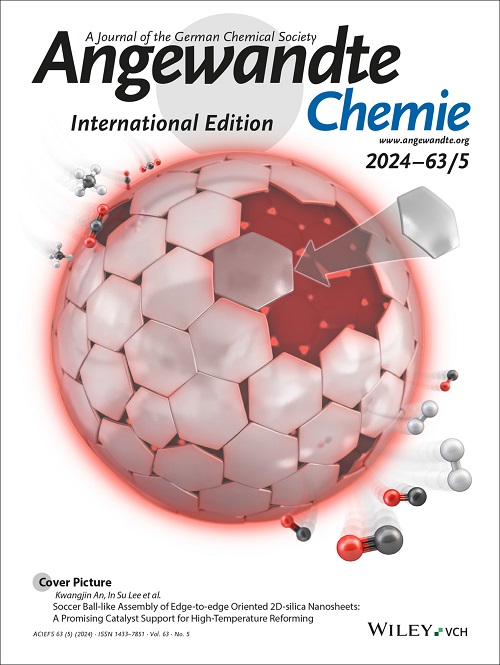Single-Step Synthesis of a Heterometallic [Cu2PdL4]2+ Hybrid Metal–Organic Coordination Cage
IF 16.1
1区 化学
Q1 CHEMISTRY, MULTIDISCIPLINARY
引用次数: 0
Abstract
Traditional methods of assembling low-symmetry heterometallic cage architectures are limited to stepwise construction and combinations of inert and labile metal ions, affording complex, anisotropic cage structures by sacrificing synthetic ease. Herein, a heterometallic [Cu2PdL4]2+ lantern-type cage has been assembled in a single self-assembly step through the use of a heteroditopic ligand with two different metal-binding groups. The resultant cage complex is a fusion of two common lantern-type cage motifs – carboxylate-based metal–organic Cu4L4 cages and pyridyl-based Pd2L4 coordination cages. Evidence for heterometallic cage formation in solution was provided by 1H and diffusion-ordered NMR spectroscopy and electrospray ionisation mass spectrometry (ESI-MS) data, while circular dichroism (CD) spectra confirmed the helical nature of the assembly. The heterometallic cage was then exploited in binding heterotopic guests. It is envisioned that the simple design strategy presented herein will ease the assembly of other structurally complex, low-symmetry cage architectures.一步合成杂金属 [Cu2PdL4]2+ 混合金属有机配位笼
本文章由计算机程序翻译,如有差异,请以英文原文为准。
求助全文
约1分钟内获得全文
求助全文
来源期刊
CiteScore
26.60
自引率
6.60%
发文量
3549
审稿时长
1.5 months
期刊介绍:
Angewandte Chemie, a journal of the German Chemical Society (GDCh), maintains a leading position among scholarly journals in general chemistry with an impressive Impact Factor of 16.6 (2022 Journal Citation Reports, Clarivate, 2023). Published weekly in a reader-friendly format, it features new articles almost every day. Established in 1887, Angewandte Chemie is a prominent chemistry journal, offering a dynamic blend of Review-type articles, Highlights, Communications, and Research Articles on a weekly basis, making it unique in the field.

 求助内容:
求助内容: 应助结果提醒方式:
应助结果提醒方式:


